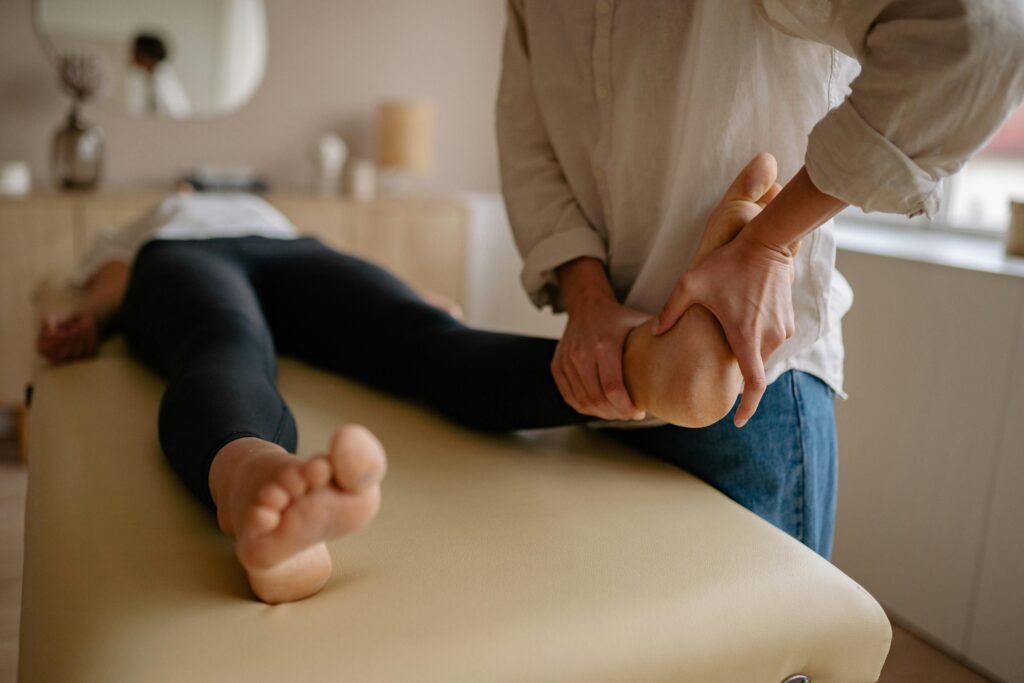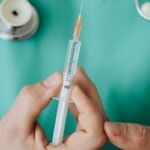Regenokine, also known as Autologous Conditioned Serum (ACS) therapy, is a non-invasive treatment that involves extracting a patient’s blood, modifying it in a lab to enhance its anti-inflammatory properties, and then reinjecting it into the affected area. The idea is simple yet profound: let the body heal itself using its own resources.
Unlike corticosteroids or pain medications that mask the symptoms, regenokine targets the underlying causes—primarily inflammation. This makes it a game-changer for those with osteoarthritis, herniated discs, and soft tissue injuries.
The Science Behind Regenokine Therapy
This treatment is based on increasing the concentration of naturally occurring anti-inflammatory proteins like IL-1Ra (interleukin-1 receptor antagonist). These proteins help to block the destructive inflammatory responses that contribute to joint degradation and chronic pain.
By incubating the patient’s blood at a specific temperature for several hours, the levels of these beneficial proteins can be enhanced before re-injection. This process provides a more sustained relief compared to conventional injections.
How Regenokine Differs From PRP and Stem Cell Therapies
Regenokine is often confused with Platelet-Rich Plasma (PRP) and stem cell treatments, but they differ in both mechanism and purpose. PRP focuses on growth factors to promote tissue repair, whereas regenokine primarily addresses inflammation. Stem cell therapy encourages regeneration, but regenokine is faster and often more cost-effective.
Furthermore, while stem cells may pose ethical or legal challenges depending on the country, regenokine uses your own blood—removing any risk of rejection or controversy.
Benefits of Regenokine Therapy
-
Non-surgical: No need for anesthesia, incisions, or downtime.
-
Natural and autologous: Comes directly from your own body.
-
Anti-inflammatory: Targets the root cause rather than just symptoms.
-
Quick recovery: Most patients return to normal activities within days.
-
Minimally invasive: A simple injection procedure.
-
Long-lasting: Relief can last from months to years.
Ideal Candidates for Regenokine
People suffering from:
-
Osteoarthritis in knees, hips, shoulders, or hands
-
Degenerative disc disease
-
Chronic lower back pain
-
Tendonitis or ligament injuries
-
Sports injuries that haven’t responded to physical therapy
Elite athletes and everyday individuals alike have found relief through regenokine, making it a versatile option for multiple demographics.
Regenokine for Athletes
Professional athletes like Kobe Bryant and Alex Rodriguez have famously turned to regenokine to extend their careers. The therapy helps reduce inflammation without compromising performance—allowing athletes to maintain peak condition without invasive surgery.
Step-by-Step Process of Regenokine Treatment
-
Blood Draw: Around 60 ml of blood is drawn from the patient.
-
Incubation: The blood is incubated for several hours to stimulate production of anti-inflammatory proteins.
-
Centrifugation: The blood is then spun to separate the serum rich in these proteins.
-
Injection: The serum is injected directly into the affected joint or soft tissue area.
-
Recovery: Most patients experience improvements within days.
Potential Side Effects and Risks
While generally safe, regenokine isn’t entirely risk-free. Some patients may experience:
-
Mild swelling or redness at the injection site
-
Temporary stiffness
-
Bruising
-
Rare cases of infection (as with any injection-based treatment)
That said, because it’s your own blood, allergic reactions are virtually non-existent.
Regenokine Success Rate
Clinical evidence suggests a significant reduction in pain and inflammation for most patients. According to peer-reviewed studies and anecdotal reports, over 70% of patients report noticeable improvement after a full course of injections.
Cost of Regenokine Therapy
Regenokine is considered an advanced treatment and is often not covered by insurance. Prices range between $6,000 and $10,000 for a full course, depending on location, practitioner, and number of sessions needed.
Regenokine vs. Cortisone Injections
Cortisone injections provide quick relief but often weaken tissues over time. Regenokine, however, works with your biology to reduce inflammation naturally, making it a more sustainable and less damaging alternative.
| Feature | Cortisone Injection | Regenokine Therapy |
|---|---|---|
| Duration of Relief | Weeks to a few months | Months to years |
| Source | Synthetic | Natural (your own blood) |
| Effect | Symptom suppression | Targets root inflammation |
| Side Effects | Tissue degradation | Minimal |
Post-Treatment Care and Expectations
Most patients resume light activities within 24 hours and normal activities within 3–5 days. Physical therapy may enhance the results, and anti-inflammatory medications should be avoided to let the serum do its job effectively.
Integrating Regenokine with Other Therapies
It can be safely used alongside physical therapy, chiropractic care, acupuncture, and even PRP if advised by your doctor. The integrative approach often yields the best results, particularly for chronic conditions.
Global Availability of Regenokine
Although pioneered in Germany, regenokine is now available in specialized clinics across the U.S., Canada, UK, and Asia. However, not all clinics offer the same standard of care—choosing a reputable provider is crucial.
What Patients Are Saying About Regenokine
From middle-aged weekend warriors to elderly arthritis sufferers, testimonials consistently highlight reduced pain, improved mobility, and a better quality of life. Many describe it as a “miracle” or “last resort that worked.”
Scientific Research Supporting Regenokine
Several studies, including those published in journals like The American Journal of Sports Medicine, back the efficacy of regenokine in reducing inflammation and improving joint function. More longitudinal studies are underway to solidify its place in mainstream medicine.
Limitations of Regenokine Therapy
While promising, regenokine is not a cure-all. It may not be effective for:
-
Complete joint deterioration
-
Advanced bone-on-bone arthritis
-
Certain autoimmune conditions
A thorough diagnosis is essential to determine suitability.
Who Should Avoid Regenokine?
Those with active infections, blood disorders, or pregnant women should consult their healthcare provider before undergoing treatment. Also, individuals with unrealistic expectations may be disappointed—this is a therapy, not magic.
How to Find a Qualified Regenokine Provider
Look for clinics with:
-
Experience in regenerative medicine
-
Certified orthopedic specialists
-
Transparent pricing and realistic expectations
-
Positive patient testimonials
-
FDA-compliant processes (for U.S. clinics)
Is Regenokine Covered by Insurance?
Unfortunately, most insurance companies categorize regenokine as an experimental or elective procedure. Some flexible spending accounts (FSAs) or health savings accounts (HSAs) may cover it, though.
How Long Do the Results Last?
Results vary but typically last between 6 months and 2 years. Some patients opt for yearly treatments as part of ongoing wellness.
Also read: Oregano Herb Leaves: A Timeless Natural Remedy That Works Wonders
FAQs
What makes regenokine different from traditional injections?
Regenokine uses your body’s own anti-inflammatory proteins, not synthetic substances, offering a more natural approach with longer-lasting relief.
Is regenokine painful?
Mild discomfort may occur during the injection, but most patients tolerate the procedure well and report minimal post-treatment pain.
Can I exercise after regenokine therapy?
Light activity is encouraged within a day or two, but high-impact workouts should wait until your doctor clears you.
How many injections will I need?
Typically, patients receive 4–6 injections over a couple of weeks. Your provider will recommend a specific plan based on your condition.
Are the results permanent?
No, but they are long-lasting. Some patients enjoy relief for over a year before needing another treatment.
Where can I get regenokine therapy?
While not universally available, many orthopedic and regenerative medicine clinics now offer this treatment. Check credentials before proceeding.
Conclusion
Regenokine is emerging as a beacon of hope for those seeking long-term relief from chronic joint and soft tissue pain. By harnessing the body’s innate healing power, it offers a safe, non-invasive, and scientifically backed alternative to surgery. As awareness and availability grow, regenokine is poised to transform the landscape of regenerative medicine.


